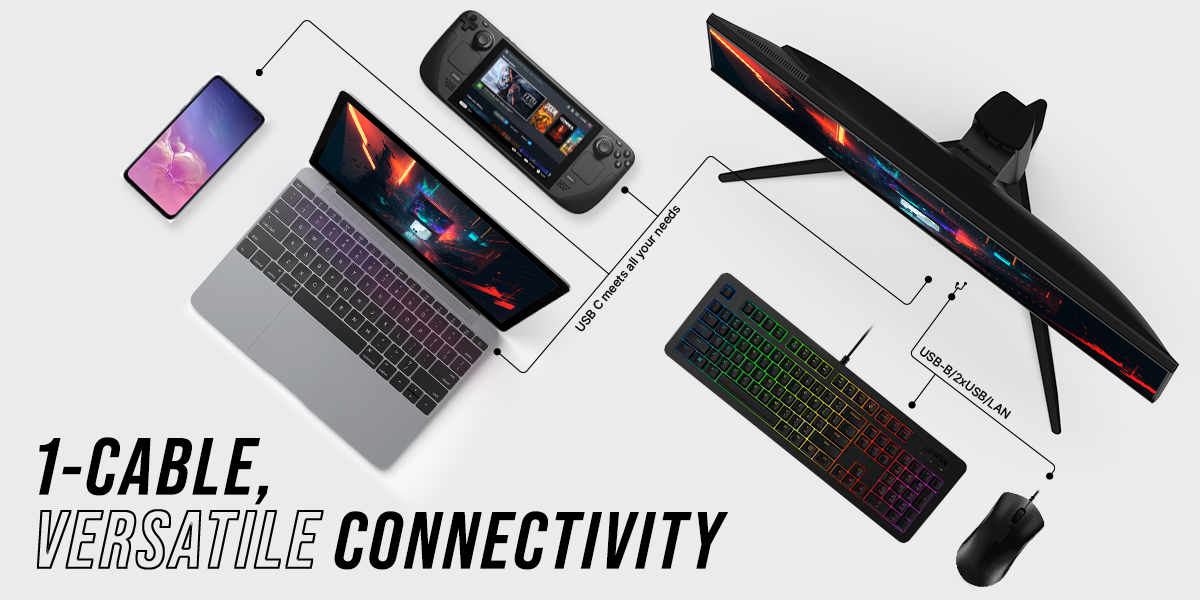Frustrated by desk clutter? USB-C monitors offer a solution, streamlining your workspace and boosting your efficiency. But what exactly are the benefits of a USB-C monitor, and why should you consider making the switch?
Single Cable Simplicity
The most significant advantage of a USB-C monitor is the elimination of cable clutter. Unlike traditional monitors that require separate HDMI, DisplayPort, and power cables, a USB-C monitor utilizes a single cable for everything. This not only saves desk space but also simplifies setup and minimizes the risk of accidental cable snags.

Power Delivery
Many USB-C monitors come with built-in power delivery functionality. This means the monitor can charge your laptop while transmitting video and data. Simply connect the USB-C cable, and your computer will be powered and ready to go. This is especially beneficial for laptops that have shorter battery life, ensuring you can work uninterrupted throughout the day without using a traditional charger.
High-Resolution Displays
USB-C monitors are designed to handle the demands of high-resolution displays. With support for resolutions like QHD (2560x1440) and even 4K (3840x2160), you'll experience stunning visuals and sharp details, perfect for creative professionals like graphic designers, video editors, and photographers. Even for tasks like writing and web browsing, the extra screen real estate of a high-resolution display can significantly improve your multitasking abilities.
KVM (On Select Monitors)
KVM (Keyboard, Video, Mouse) switches act as a central hub, allowing you to control multiple devices with just one keyboard, mouse, and monitor. It directs the signals from your monitor to the chosen device you want to work on. While KVM functionality isn't built into USB-C by standard, some USB-C monitors such as PX277 Pro and PX277 OLED Max are starting to integrate KVM directly. This eliminates the need for extra cables or docking stations, allowing you to seamlessly switch between devices with a KVM switch for a truly streamlined multi-device workspace.

It's important to note that not all laptops or desktops support video output through their USB-C ports. While the connector itself might be present, some devices only utilize it for data transfer or charging. Furthermore, not all USB-C cables are created equal. For a smooth setup, ensure you're using a cable certified for video output.
With its ability to simplify connections, deliver power, support high resolutions, and offer advanced features like KVM, a USB-C monitor can change the way you work and create. So, ditch the cable clutter and embrace the power of USB-C connectivity. Your workspace will thank you for it.

0 comments